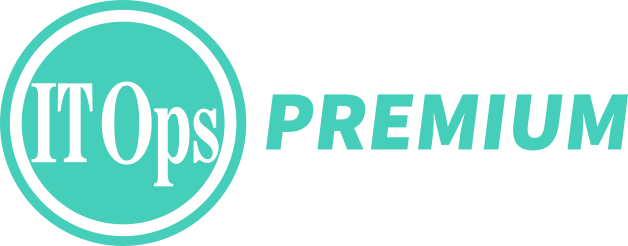
When your architecture is small, it’s easy to be nimble, and platforms such as ServiceNow are great at helping organizations scale up to launch major product updates more frequently. However, the downside of this is that many companies end up with multiple instances and application owners across departments, leading to complexity that’s difficult to track and even harder to optimize.
Managing multiple ServiceNow instances has become a critical challenge for organizations as their ServiceNow footprints grow, and the reality is that many are still managing instances the same way businesses managed servers before the early 2000s.
Independently managing individual instances is causing long delays in the development pipeline, or even worse, a backlog or ‘process debt’ so big that companies are becoming paralyzed and unable to jump on the next business transformation bandwagon. Case in point, ServiceNow is releasing new AI capabilities every month, but many companies are so backed up with process debt workloads that they must reconsider the priority of existing projects before considering taking advantage.
Multi-instance management—the practice of governing and coordinating multiple ServiceNow platform instances—plays a vital role in ensuring smooth operations across development, testing, and production.
Understanding Instance Management
Instance management is a critical practice for organizations leveraging ServiceNow. At its core, instance management refers to overseeing, coordinating, and optimizing the operation of multiple platform instances, which encompass development, test, and production environments.
For IT teams, strategic instance management is aimed at maintaining consistency across various environments while ensuring that updates, features, and applications flow seamlessly between them. This involves managing not just the configuration items and application code, but also handling complex dependencies, managing access controls, and maintaining integrity across all instances.
It’s a practice designed to help organizations roll out large-scale ServiceNow initiatives (such as SecOps, ITOM, or any other large-scale ServiceNow initiative), faster —even when executed in parallel with other platform capabilities.
Learning the Hard Way With Poor Instance Management
Many organizations learn the hard way that neglecting instance management can lead to significant operational headaches. There are a lot of downsides to not practicing holistic instance management, and they usually fall into one of the three following categories:
Instance Drift: When development and test environments begin to diverge from production, it creates a ripple effect of deployment failures and increased manual intervention. This drift often manifests in mismatched version numbers, inconsistent business rules, varying script includes, and conflicting application dependencies that can cause catastrophic failures during deployment.
Inefficient Manual Processes: Relying on spreadsheets and manual tracking not only slows down operations but also introduces human error into critical processes. Teams often struggle with maintaining accurate deployment manifests, tracking configuration changes, and managing update sets across instances, leading to deployment conflicts and rollback challenges.
Compliance Vulnerabilities: Without proper oversight, maintaining regulatory compliance across multiple instances becomes a high-risk and labor-intensive endeavor. This includes challenges in maintaining consistent access controls, audit trails, and data privacy measures across all environments, potentially exposing organizations to security breaches and compliance violations.
The Six Core Principles of Effective Instance Management
To address these challenges, IT teams should follow these essential principles:
Real-Time Multi-Instance Visibility
Maintain a unified, real-time view of all changes across your ServiceNow environment. This means implementing monitoring solutions that track instance modifications, configuration changes, and deployment activities across all environments. Technical teams should have immediate access to detailed comparisons of instance configurations, including differences in business rules, client scripts, UI policies, and other critical platform components.
Policy-Driven Governance
Implement automated policies that prevent unauthorized changes and maintain standardized processes. This involves creating robust role-based access control systems, establishing automated validation checks for deployments, and implementing comprehensive audit logging mechanisms. Technical controls should enforce change freezes, require peer reviews for critical changes, and automatically validate configuration compliance before allowing deployments.
Continuous Synchronization
Enable controlled, policy-based synchronization between instances to ensure changes propagate smoothly and maintain production-like conditions across all environments. This requires implementing automated data refresh procedures, maintaining consistent system properties across instances, and ensuring that core platform configurations remain aligned between environments.
On-Demand Deployments
Leverage automation to reduce manual labor and human error in deployment processes. This includes implementing automated deployment pipelines that can handle complex dependencies, manage conflict resolution, and perform pre- and post-deployment validation checks. Technical teams should be able to execute deployments with confidence, knowing that automated safeguards will prevent common issues like missing dependencies or incompatible configurations.
Release Fidelity
Focus on minimizing gaps between planned and actual outcomes in the release process. This involves implementing sophisticated version control mechanisms for platform configurations, maintaining detailed deployment manifests, and ensuring thorough testing of all components before release. Technical teams should have tools to track every configuration item, script, and workflow modification from development through to production.
Native Integration
Utilize tools that are native to your platform environment. This means leveraging ServiceNow’s built-in capabilities for change management, deployment coordination, and instance synchronization rather than trying to adapt external tools. Technical teams should focus on solutions that understand platform-specific concepts like update sets, scoped applications, and platform dependencies.
The Business Case for Strategic Instance Management
For IT leaders, the benefits of implementing proper instance management extend far beyond technical improvements. From an operational standpoint, developer productivity will see a significant enhancement through automated deployment processes and standardized development environments: teams will spend less time troubleshooting environment-related issues and more time delivering value-adding features and improvements.
Ultimately, risk management will also become more robust with comprehensive audit trails and automated compliance checks, with technical teams able to implement consistent security controls across all instances, maintaining detailed records of all configuration changes and access patterns. It’s a systematic approach that companies will see significantly reducing the likelihood of security breaches and compliance violations.
The financial impact of strategic instance management can also be substantial, as automation reduces the need for manual intervention in routine tasks. Organizations can scale their ServiceNow implementations more efficiently, requiring fewer resources for maintenance and support. The reduction in deployment-related incidents and faster recovery times will translate directly to cost savings and improved resource utilization.
Strategic instance management should also help companies deploy new features and applications faster. It will help technical teams respond more quickly to business requirements, giving them insight to implement changes with confidence across all instances. This level of agility is going to be critical when it comes to the adoption of emerging technologies like GenAI.
Taking Action
Remember that effective instance management isn’t just about maintaining system hygiene—it’s about creating a foundation for innovation and growth. Technical teams should focus on building automated pipelines, implementing robust monitoring solutions, and establishing clear governance frameworks that can scale with the organization’s needs.
For IT teams looking to improve their instance management practices, the path forward begins with assessment and planning. Start by conducting a thorough technical audit of your current instance landscape, including an inventory of all instances, their configurations, and existing management processes. Document current pain points, particularly around deployment processes, synchronization challenges, and compliance requirements.
Organizations that master this discipline will find themselves better positioned to leverage their platform investments and drive meaningful business value through consistent, reliable, and efficient platform operations.








